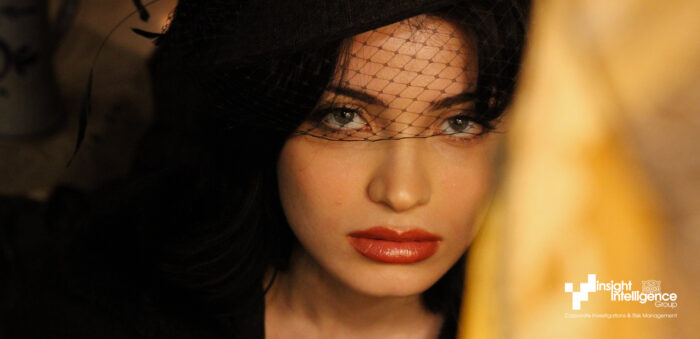The fate of Muammar Gaddafi, Libya’s former leader, is known; he died on October 20, 2011, but that is another story.
The former first lady, Safia Farkas Gaddafi, has long been “under the radar” of the media.
Her life story, on the other hand, is intriguing and may have a relation to my own country. As you are all aware, I was born in Croatia, one of the former Yugoslav republics.
Origin
There are two contradicting claims concerning Muammar Gaddafi’s widow’s origins.
Safija Farkas Gaddafi is of Croatian or Hungarian heritage, according to one account, and her family is from Mostar, Bosnia and Herzegovina.
Farkas is a common Hungarian name that means “wolf,” and Safiya’s grandfather was allegedly Ivan Farkas, a minor Hungarian official stationed in Mostar during the Austro-Hungarian empire.
She is a Bosnian Croat from Mostar, where she met her future husband while he was studying at a Yugoslav military facility in the years leading up to his coup in Libya in 1969.
Another theory states that the former Libyan first lady is from the Barasa tribe in eastern Libya, was born in Baida, and trained as a nurse. She met Libya’s leader, Muammar Gaddafi, while he was hospitalised and being treated for appendicitis in 1970, thanks to her job.
The following year, she married him for the second time. Gaddafi and Safia have seven children (six males and one girl) and have adopted two.
20 tonnes of gold and $30 billion in bank deposits
Safia did not make an impression at the start of the marriage. Farkash was chosen vice president of the African First Ladies Organisation during an African Union leaders’ meeting in Sharm al-Sheikh in 2008, despite the fact that she was not there and has never engaged in its operations.
She just began making more public appearances after 2009. She prepared a party to commemorate the anniversary of her husband’s 1969 revolution, and she attended the graduation of female police students in 2010.
The media focused on her wealth and the extravagant lifestyle she led with her husband.
For years, it was rumoured that she had 20 tonnes of gold and her own jet. She was the owner of the airline “Burak Air,” which operated out of Mitiga International Airport. Despite the fact that this company competed with the Libyan national carrier, she worked under her husband’s permission.
The International Coalition Against War Criminals, based in France, estimated Gaddafi’s wealth to reach 80 billion dollars in 1992, while Safia had up to 30 billion dollars.
So, how about right now?
Safia’s current financial situation is unknown, but her accounts were once suspended. During the Libyan war, a UN ruling barred Libyan and Gaddafi assets, and the governments of the United Kingdom and France later approved a second mining embargo that froze 18 billion pounds of Safia Farkas’ assets.
Furthermore, in March 2012, the UAE Central Bank ordered all banks and financial institutions in the country to freeze the accounts of Safia Farkas and other high-ranking Gaddafi regime officials.
After escaping Libya and spending practically the whole civil war there, exile Safia settled in Algeria with her daughter Aisha and sons Muhammad and Hannibal.
As the battle for Tripoli drew to a close, the Gaddafi family was forced to flee to Algeria from their fortified bastion.
As the Battle for Tripoli neared its conclusion in mid-August, the family was forced to flee their fortified property. At the time, Algerian authorities refuted the reports.
On August 27, 2011, the Egyptian news agency Mena reported that six armoured Mercedes-Benz limousines carrying Libyan rebels were seen crossing the border in the southwestern Libyan city of Ghadames towards Algeria. Gaddafi was not among them; it was later confirmed.
On August 29, Algerian authorities formally confirmed that Safia had entered the country early that day with her daughter Ayesha and sons Muhammad and Hannibal.
According to an Algerian Foreign Ministry spokesman, all of the convoy’s passengers had arrived in Algiers and were not named on any of the ICC’s warrants for potential war crimes prosecution.
The family had arrived in a Mercedes and a bus at a Sahara desert entry point. According to unconfirmed accounts, there were “many children” at the event, but Gaddafi was not among them.
The Algerian government then informed the leader of the Libyan National Transitional Council, who had not formally requested their return, that the group had been given humanitarian admission.
They left their Algerian refuge in October 2012 to fly to Oman, where they were granted political asylum.
Rumours
There were rumours that she was in Germany at one point, but this was never confirmed.
Rumours reportedly spread that she had purchased a home in Makarska, a small Croatian seaside town, and planned to settle there.
In 2013, the widow of Muammar Gaddafi, Libya’s deposed leader, requested assistance from the UN and the EU in identifying her husband’s and son Mutassim’s remains. Furthermore, Safia urged that the African Union investigate Gaddafi’s and their son’s deaths. Gaddafi and his son were seized and executed by revolutionary soldiers on October 20, 2011. Their bodies were discovered in the Misurata harbour after being buried at an unidentified location.
In April 2016, the Tripoli administration granted her permission to re-enter Libya.
The truth regarding Muammar Gaddafi’s widow’s roots will remain unknown, but what “connects” Safia and me, according to one story, is that we are both from Croatia, albeit through Hungarian heritage.
And who knows, maybe I’ll run into her on Makarska’s waterfront next summer.



